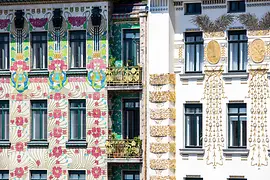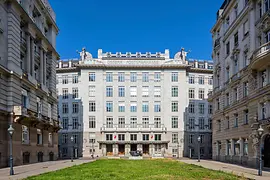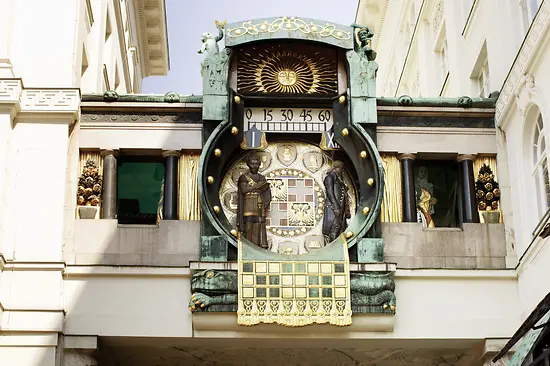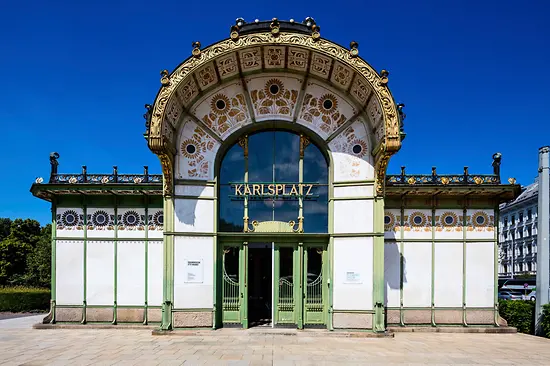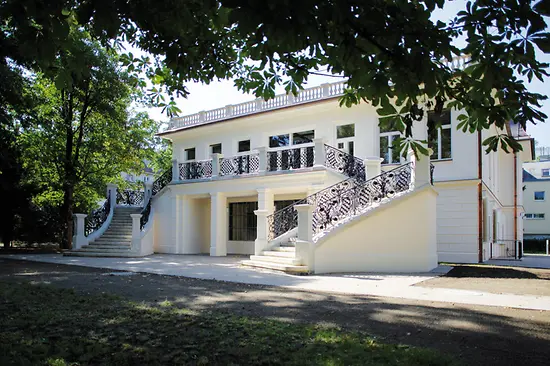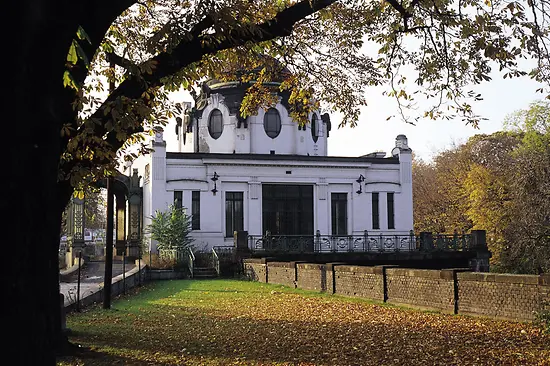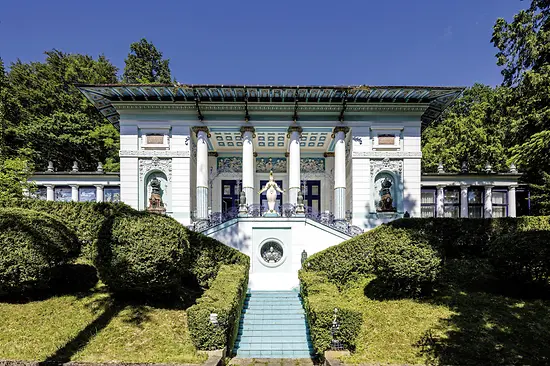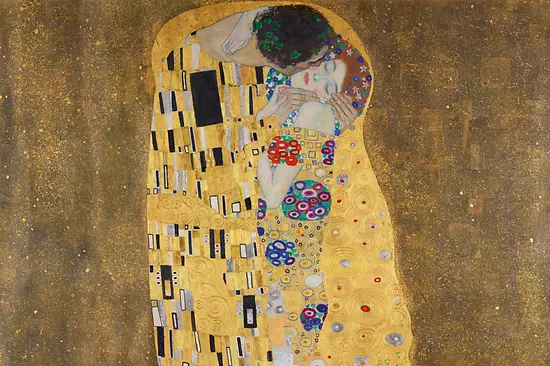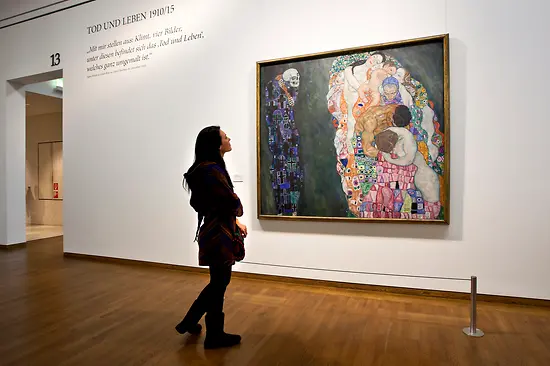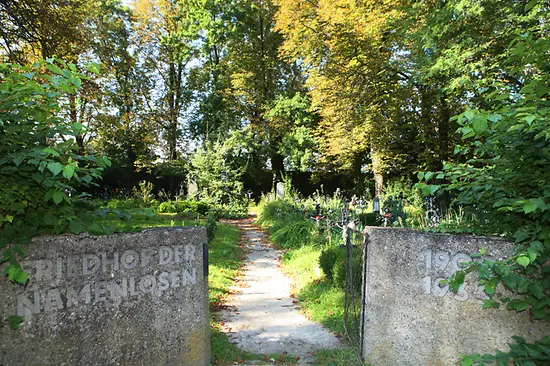Art Nouveau and Modernity
Vienna was one of the birthplaces of modernity at the beginning of the last century. In architecture too, master builders blazed new trails. Above all, it was Otto Wagner who shaped Vienna's skyline as we know it today. He preferred a geometric variant of Art Nouveau. His buildings are clear and usually symmetrically-arranged - matter-of-fact and down-to-earth. The most important Wagner buildings in Vienna are the stations, premises and bridges of the former Stadtbahn (today U4 and U6), the Majolika House and Muse House on Wienzeile, the Church on Steinhof and the Postal Savings Bank. The noteworthy component of Art Nouveau architecture were the ornaments. These were used especially for the exterior design. Marble, glass, tiles, metal applications, colorful pieces, and gilding ennobled the houses.
Floral ornaments are on one of the most important Art Nouveau buildings, the Vienna Secession. Built by Joseph Maria Olbrich in 1898, it was the first exhibition building in Central Europe to be dedicated to modern art. Another important representative of Viennese Art Nouveau was Josef Hoffmann. His villas in the 19th district still give an impression of the style that dominated at that time.
Adolf Loos and his Loos House
Adolf Loos spoke out against any decoration of buildings; his purely functional architecture thus distanced him clearly from the Art Nouveau style. The Loos House on Michaelerplatz is the best evidence of his work: instead of ornaments, high-quality materials were used both inside and out. The "house without eyebrows" (because the small roofs over the windows that were common at the time were lacking here) was a shock for citizens of Vienna who were used to Historicism and for Kaiser Franz Joseph, who could see the house from the Imperial Palace and loathed it.
The First World War and the collapse of the monarchy in 1918 brought about the end of Viennese Art Nouveau. The social housing of "Red Vienna" shaped the Viennese architecture of the period between the wars.
Links with more information:

